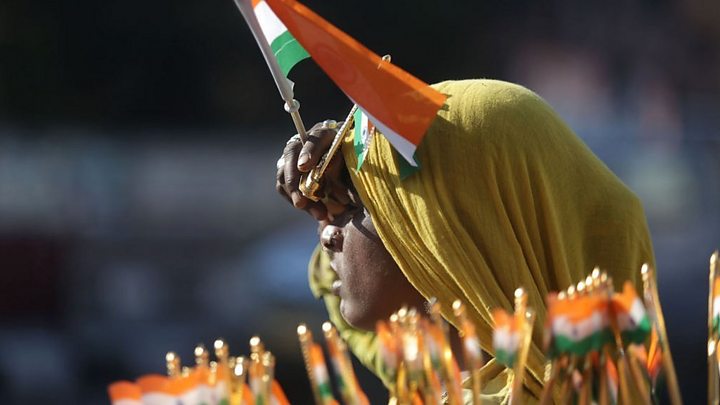Five promises from India’s budget
India’s first full-time female finance minister, Nirmala Sitharaman, has presented her maiden annual budget. The BBC’s Aakriti Thapar explains what the major announcements were and what they mean for India.
This is the first budget since Prime Minister Narendra Modi’s landslide victory in the general election this year. There were big expectations because it came against the backdrop of an economic slowdown and record-high unemployment levels.
Ms Sitharaman said that India could grow to a $5 trillion (£4 trillion) economy in the next five years (from $2.7 trillion) and outlined her priorities for spending. But she did not announce exactly how all funds would be allocated.
Roads, rail and rural development
The finance minister said boosting the country’s infrastructure was the government’s top priority. This is in line with Mr Modi and his BJP party’s main election promise. In his manifesto, he had pledged to spend $1.44 trillion on infrastructure by 2024.
While she emphasised investments ($72bn) to improve railway infrastructure, Ms Sitharaman said the government would also build 125,000km (77,671 miles) of roads over the next five years at a cost of $11.6bn.
Many of the development schemes announced focused on bridging the rural-urban divide.
Targeting 2022, India’s 75th year of independence, Ms Sitharaman announced that all houses would have electricity and cooking gas. She also said that all rural households would have clean water supply by 2024.
Tax increases for the wealthy
Corporate tax will be reduced to 25% from 30% for companies that have an annual turnover of up to $58m. This, the finance minister said, would include 99.3% of firms in India. She added that this would boost profits for a large number of companies, but she and experts also say it is an important step to stimulate investments.
While there was no change in the income tax structure for most brackets, Ms Sitharaman announced a 3% increase in taxation for some of the highest earners in Indian society – those with an income between $292,000 – $730,000 – and a 7% increase for those with an income above $730,000.
Foreign investment liberalisation
India recently lost its status as the world’s fastest-growing major economy and the government knows it needs to attract investment to spur growth.
Ms Sitharaman said she would examine options to open up foreign direct investment in the aviation, media and animation, and insurance sectors.
She also said rules would be relaxed for single-brand retail companies. At the moment, such companies – like Ikea and Apple – are required to source 30% of their materials or components locally. Those components aren’t always available in India or they are of poorer quality.
Multi-brand retailers like Walmart will have to continue to operate within the same constraints that they currently face. They’re only able to sell their products via e-commerce platforms or in conjunction with Indian groups.
In the 2018-2019 Economic Survey presented a day before the budget, Chief Economic Advisor Krishnamurthy Subramanian said that an increase in foreign investments would lead to job creation, greater productivity and would also foster exports to create demand.
What’s in it for the common man?
While there hasn’t been an increase in income tax for most citizens, some products are likely to become more expensive as the government seeks to boost its revenues.
Local taxes on petrol and diesel will increase by two rupees while an import tax of one rupee per tonne has been levied on crude oil. Gold and other precious metals will also become more expensive after import duties were increased.
Some relief may come to the common man via a new tenancy and affordable housing framework but details are yet to be released.
Source: Read Full Article




